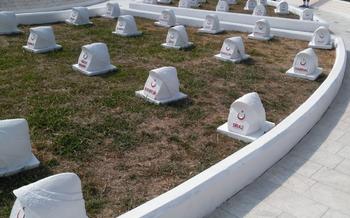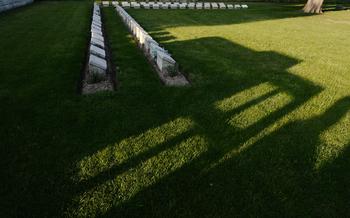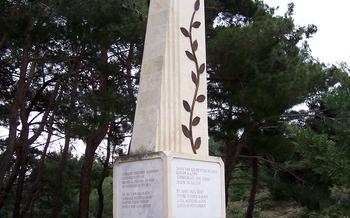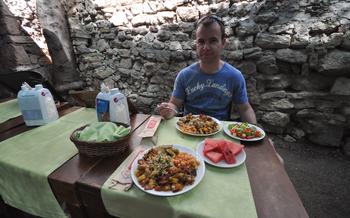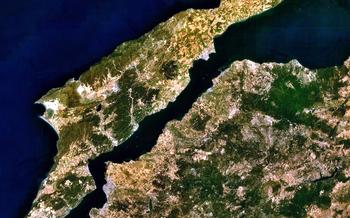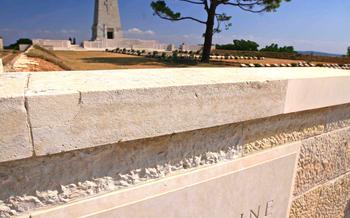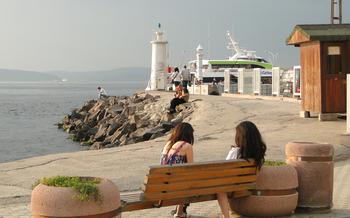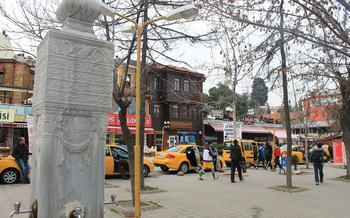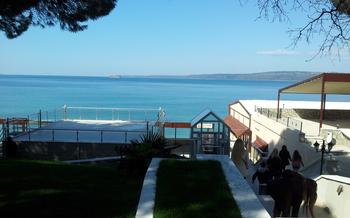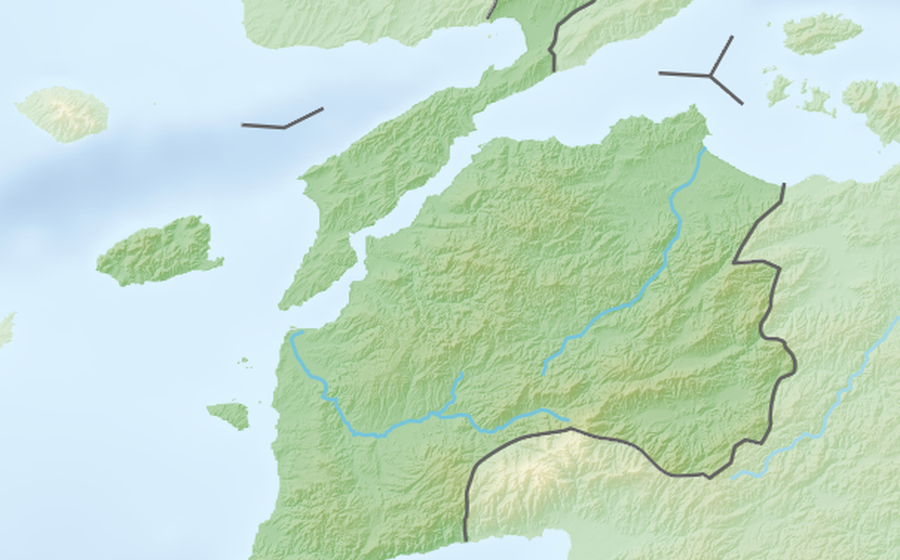
Gallipoli Peninsula Peace Park
- The Gallipoli Peninsula Peace Park: A Place of Remembrance and Reconciliation
- Location and Accessibility of the Gallipoli Peninsula Peace Park
- Key Features of the Gallipoli Peninsula Peace Park
- Exploring the Peace Park: A Walk Through History
- The Peace Park as a Site for Reflection and Contemplation
- Participating in Commemorative Events and Ceremonies
- Visiting the Gallipoli Peninsula Peace Park Museum
- Exploring the Natural Beauty of the Gallipoli Peninsula
- Paying Respect at the Lone Pine Cemetery
- Visiting Chunuk Bair and the 57th Regiment Memorial
- Experiencing the Gallipoli Peninsula Through Guided Tours
- Respecting the Sacredness of the Site
- Tips for Making the Most of Your Visit
- Insider Tip: Explore the Hidden Gems of the Gallipoli Peninsula
The Gallipoli Peninsula Peace Park: A Place of Remembrance and Reconciliation
The Gallipoli Peninsula, located in northwestern Turkey, holds immense historical significance as the site of the Gallipoli Campaign during World War I. This tragic conflict, which lasted from April to December 1915, witnessed the loss of thousands of lives from both the Allied and Ottoman forces. In the aftermath of the war, the Gallipoli Peninsula Peace Park was established as a symbol of peace and reconciliation between the nations involved in the conflict. This serene and tranquil park serves as a poignant reminder of the futility of war and the importance of fostering international understanding and cooperation.
The establishment of the Gallipoli Peninsula Peace Park was a significant step towards promoting peace and reconciliation between Turkey and the Allied nations. The park's creation symbolized a shared commitment to healing the wounds of the past and building a future based on mutual respect and understanding. The park's serene atmosphere and commemorative monuments provide a powerful backdrop for visitors to reflect on the horrors of war and the importance of working together to prevent future conflicts.
Location and Accessibility of the Gallipoli Peninsula Peace Park
Situated at the tip of the Gallipoli Peninsula, the Gallipoli Peninsula Peace Park holds a strategic position. The park's location offers easy access from the town of Çanakkale, a major transportation hub in the region. Visitors can reach the park via a scenic ferry ride across the Dardanelles Strait, providing breathtaking views of the surrounding landscape. Additionally, well-maintained roads connect the park to other parts of the peninsula, making it easily accessible by car or tour bus. The park's strategic location and convenient transportation options ensure that visitors can seamlessly integrate a visit to the peace park into their broader exploration of the Gallipoli Peninsula.
Key Features of the Gallipoli Peninsula Peace Park
The Gallipoli Peninsula Peace Park is designed to provide a serene and tranquil atmosphere for visitors to reflect on the horrors of war and the importance of peace. As you stroll through the park, you'll notice well-maintained walking trails and paths that wind their way through the park's natural beauty. These paths lead you to various commemorative monuments and memorials that pay tribute to the fallen soldiers from both sides of the conflict.
The park's centerpiece is the Memorial Wall, an imposing structure inscribed with the names of over 23,000 soldiers who lost their lives during the Gallipoli Campaign. The ANZAC Commemorative Site is another significant landmark, featuring a bronze statue of a digger and a series of bronze plaques honoring the Australian and New Zealand soldiers who fought in the campaign. The Turkish Memorial, located at the highest point of the park, offers breathtaking views of the surrounding landscape and commemorates the Turkish soldiers who lost their lives.
Exploring the Peace Park: A Walk Through History
Following the well-maintained walking trails within the Gallipoli Peninsula Peace Park, visitors embark on a journey through time, discovering the park's significant landmarks and commemorating the fallen soldiers of the Gallipoli Campaign. The Memorial Wall, a poignant tribute to the thousands who lost their lives, stands as a solemn reminder of the sacrifices made during the conflict. The ANZAC Commemorative Site and the Turkish Memorial pay homage to the soldiers from both sides who fought bravely in the battle. These memorials provide a space for visitors to pause and reflect on the futility of war and the importance of peace. The park's tranquil atmosphere encourages contemplation and invites visitors to honor the memory of those who fought and died on the Gallipoli Peninsula.
The Peace Park as a Site for Reflection and Contemplation
The Gallipoli Peninsula Peace Park offers a tranquil environment that invites visitors to engage in quiet reflection and contemplation. Amidst the serene surroundings, one can't help but ponder the futility of war and the immense suffering it inflicts on humanity. The park serves as a powerful reminder of the senseless loss of life during the Gallipoli Campaign and the importance of fostering peace and understanding among nations.
Through its serene atmosphere and poignant memorials, the park encourages visitors to reflect on the human cost of war and the enduring impact it has on individuals, families, and communities. The park's peaceful ambiance provides a space for visitors to pause, remember, and honor the fallen soldiers from both sides of the conflict.
Moreover, the park plays a crucial role in promoting peace education and conflict resolution. By shedding light on the devastating consequences of war, the park aims to inspire visitors to become advocates for peace and to work towards resolving conflicts through peaceful means. It serves as a poignant reminder that war should never be the first resort and that diplomacy and dialogue should always be pursued to prevent future tragedies.
Participating in Commemorative Events and Ceremonies
The Gallipoli Peninsula Peace Park hosts several commemorative events and ceremonies throughout the year to honor the memory of the fallen soldiers and promote peace and reconciliation. One of the most significant events is the annual ANZAC Day service, held on April 25th. This service commemorates the landing of the Australian and New Zealand Army Corps (ANZAC) on the Gallipoli Peninsula in 19The ceremony includes a dawn service, a wreath-laying ceremony, and a commemorative march.
Other important events include the Turkish Martyrs' Day ceremony, held on March 18th, and the Gallipoli Peace Festival, held in August. These events bring together people from all over the world to remember the sacrifices made during the Gallipoli Campaign and to promote peace and understanding.
When attending these ceremonies, it is essential to be respectful and mindful of the significance of the occasion. Visitors should dress appropriately, maintain silence during the ceremonies, and follow any instructions provided by the organizers. Participating in these events is a moving and powerful way to honor the fallen soldiers and to contribute to the ongoing legacy of peace and reconciliation at the Gallipoli Peninsula Peace Park.
Visiting the Gallipoli Peninsula Peace Park Museum
The Gallipoli Peninsula Peace Park Museum is a must-visit for anyone interested in learning more about the Gallipoli Campaign. The museum houses a vast collection of artifacts, documents, and photographs that provide a comprehensive account of the historical events that unfolded on the peninsula. Interactive exhibits and displays bring the past to life, offering visitors a deeper understanding of the motivations, challenges, and sacrifices of the soldiers who fought here.
The museum plays a crucial role in preserving the memory of the Gallipoli campaign, ensuring that the stories of the fallen soldiers are never forgotten. It serves as a reminder of the futility of war and the importance of peace and reconciliation. Through its educational programs and exhibits, the museum contributes to peace education and conflict resolution, promoting understanding and cooperation among nations.
Exploring the Natural Beauty of the Gallipoli Peninsula
Beyond its historical significance, the Gallipoli Peninsula boasts stunning natural beauty that captivates visitors. Rolling hills covered in lush olive groves, tranquil coastal landscapes, and hidden coves create a breathtaking backdrop for your visit.
The park offers a variety of opportunities for outdoor enthusiasts. Embark on a leisurely hike along well-maintained trails, immersing yourself in the serene natural surroundings. Keep an eye out for diverse bird species that call the park home, making it a haven for birdwatching enthusiasts. Wildlife enthusiasts will delight in spotting various animals that inhabit the peninsula, including rabbits, foxes, and even wild boars.
As you explore the park, you'll stumble upon historical landmarks and ancient ruins that tell stories of the region's rich past. Discover the remnants of ancient settlements, fortifications, and monuments that have stood the test of time, adding another layer of intrigue to your visit.
Paying Respect at the Lone Pine Cemetery
Among the hallowed grounds of the Gallipoli Peninsula, the Lone Pine Cemetery stands as a poignant testament to the immense sacrifice and loss endured during the ill-fated campaign. This revered burial site, meticulously maintained and exuding an aura of serenity, serves as the final resting place for fallen soldiers from both sides of the conflict.
Established in 1923 by the Commonwealth War Graves Commission, the Lone Pine Cemetery encapsulates the spirit of remembrance and reconciliation that permeates the Gallipoli Peninsula Peace Park. Its meticulously aligned rows of headstones, each bearing the name of a brave soldier who made the ultimate sacrifice, create a deeply moving and evocative landscape.
As visitors traverse the cemetery's tranquil pathways, they are enveloped by a profound sense of respect and gratitude. The meticulously manicured lawns and the pristine condition of each grave underscore the enduring commitment to honoring the memory of those who fought and perished on these hallowed grounds.
The Lone Pine Cemetery is not merely a burial ground; it is a sacred space where history intertwines with the present, fostering a deep connection between visitors and the fallen soldiers. Here, amidst the tranquil surroundings, one can pause to reflect on the futility of war and the preciousness of peace.
Whether you are a descendant of a soldier who fought at Gallipoli or simply a visitor seeking to pay your respects, the Lone Pine Cemetery offers a profound and deeply moving experience. It is a place where the echoes of history resonate, reminding us of the indomitable spirit of those who gave their lives for their country.
Visiting Chunuk Bair and the 57th Regiment Memorial
Chunuk Bair, a strategic hilltop overlooking the Dardanelles Strait, played a crucial role in the Gallipoli Campaign. The 57th Regiment Memorial, situated atop this hill, stands as a poignant tribute to the brave soldiers who fought and lost their lives during the fierce battle for its control.
The 57th Regiment, comprising young Turkish soldiers, valiantly defended Chunuk Bair against relentless attacks by the ANZAC forces. Their heroic resistance exemplified the indomitable spirit of the Turkish army. The memorial, inaugurated in 1960, honors their sacrifice and commemorates the pivotal role they played in the Gallipoli Campaign.
Visitors to Chunuk Bair can explore the memorial, pay their respects to the fallen soldiers, and learn about the significance of this strategic location. The hilltop also offers breathtaking panoramic views of the surrounding landscape, providing a glimpse of the terrain that witnessed intense fighting during the campaign.
Experiencing the Gallipoli Peninsula Through Guided Tours
Exploring the Gallipoli Peninsula with a knowledgeable guide offers a deeper understanding of the historical significance and poignant stories that lie within this sacred landscape. Guided tours provide a comprehensive narrative of the events that unfolded during the Gallipoli Campaign, allowing visitors to connect with the past in a meaningful way.
Professional tour operators offer a range of options to cater to different interests and preferences. Group tours provide a social and interactive experience, while private tours allow for a more customized and intimate journey. Visitors can choose from half-day or full-day tours, depending on their time constraints and interests.
When selecting a tour operator, it is essential to choose a reputable and experienced company that employs knowledgeable and passionate guides. Look for tour operators that have a proven track record of providing informative and engaging tours, ensuring that visitors gain the most from their experience.
Guided tours typically cover the key landmarks and memorials of the Gallipoli Peninsula, including the ANZAC Commemorative Site, the Turkish Memorial, and the Lone Pine Cemetery. Guides share historical insights, personal anecdotes, and poignant stories that bring the past to life, allowing visitors to connect with the sacrifices made by soldiers from both sides.
Joining a guided tour is an enriching way to delve into the complexities of the Gallipoli Campaign and gain a deeper appreciation for the courage, resilience, and humanity displayed by the soldiers who fought here. Whether you are a history buff, a descendant of a fallen soldier, or simply seeking a profound and moving experience, a guided tour of the Gallipoli Peninsula is an unforgettable journey that will stay with you long after your visit.
Respecting the Sacredness of the Site
The Gallipoli Peninsula Peace Park is a sacred place of remembrance and reconciliation, where thousands of soldiers from both sides lost their lives during the Gallipoli Campaign. As visitors, it is our responsibility to behave respectfully and appropriately within the park. This means maintaining silence near memorials, refraining from disturbing the peace, and avoiding any actions that could be seen as disrespectful or disruptive.
It is important to remember that the park is not just a tourist attraction, but a place where people come to pay their respects to the fallen and to reflect on the horrors of war. By respecting the sacredness of the site, we can help to ensure that the park remains a place of peace and reconciliation for generations to come.
Here are some specific guidelines for conduct within the park:
- Maintain silence near memorials and cemeteries.
- Refrain from disturbing the peace by playing loud music or engaging in other disruptive activities.
- Avoid touching or climbing on memorials or other structures.
- Be respectful of other visitors, especially those who may be grieving or paying their respects.
- Dispose of trash properly and help to keep the park clean.
By following these guidelines, we can all help to create a respectful and meaningful experience for everyone who visits the Gallipoli Peninsula Peace Park.
Tips for Making the Most of Your Visit
To fully appreciate the Gallipoli Peninsula Peace Park, consider visiting during the shoulder season (April-May and September-October) when the weather is pleasant and crowds are smaller. This will allow you to explore the park at your own pace and soak in its tranquil atmosphere.
Combine your visit to the park with other attractions in the region to create a comprehensive and enriching experience. Explore the nearby town of Çanakkale, visit the Troy Archaeological Site, or venture further to the charming Greek island of Bozcaada. Each destination offers unique historical and cultural insights.
Pack accordingly for your visit to the Gallipoli Peninsula Peace Park. Wear comfortable shoes for walking along the trails, bring a hat and sunscreen to protect yourself from the sun, and consider binoculars for birdwatching and wildlife spotting. A camera is also essential to capture the stunning scenery and historical landmarks.
Insider Tip: Explore the Hidden Gems of the Gallipoli Peninsula
Beyond the well-known landmarks of the Gallipoli Peninsula, there are hidden gems waiting to be discovered by curious travelers. One such place is the Kilitbahir Fortress, a stunning historical site located at the narrowest point of the Dardanelles Strait. Built in the 15th century, the fortress played a crucial role in controlling access to the strait. Visitors can explore its impressive walls, towers, and dungeons, offering a glimpse into the region's rich military history.
Another hidden gem is the Aynali Kavak Nature Park, a beautiful natural oasis nestled along the coast of the Sea of Marmara. Known for its stunning views, the park features a diverse landscape of forests, meadows, and wetlands. Visitors can enjoy hiking trails, birdwatching, and wildlife spotting, immersing themselves in the tranquility of nature.
Unveiling the hidden gems of the Gallipoli Peninsula allows travelers to delve deeper into the region's history, culture, and natural beauty. These lesser-known sites offer unique perspectives and experiences, providing a comprehensive understanding of this fascinating destination.
